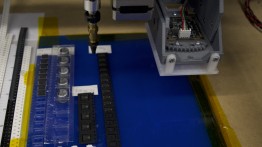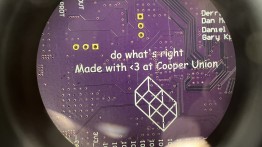Printed Circuits Board (PCB) Laboratory
When a project requires realizing a system on a PCB, the layout is prepared in software tools and the PCB is manufactured externally. However, students typically perform at least part of the assembly (e.g., mounting chips on the board) in-house.
The PCB Laboratory at the Cooper Union enables students to undertake in-depth hands-on PCB reworks with the help of the high-quality soldering stations, hot-air gun, and microscopes. This enables students to create higher end PCBs that are denser in components with more capabilities and makes it easier to debug any issues.
The laboratory also houses the pick-n-place machine which allows the mass production of the Cooper Common Node Board, which serves as a breakout board for the ESP32-S3FN8 microcontroller.
There are also a number of FPGA development boards (Zedboards) that are nominally kept in 607, though in reality the boards may be moved to other rooms if needed. These boards are used in ECE311 Hardware Design, which is required for EE students in the signals and electronics track, though they may also be used in other projects as well, such as senior design projects.
The department has developed a system for training student operators, who have the necessary expertise to use the equipment properly. With the assistance of the electrical engineering laboratory technicians, students operators can train other operators, so that continuity is maintained as students graduate. Students without proper training are not permitted in the laboratory unless an EE laboratory technician or student operator is present.
The student PCB Laboratory operators help other students review their design schematics or layouts or help them create one from a pre-existing schematic. The operators also help with ordering and assembling.
This laboratory supports schoolwide projects that require PCB or FPGA development, not just those in electrical engineering. For example, many VIP projects rely on the facilities in the room and expertise provided by the PCB Laboratory operators.






